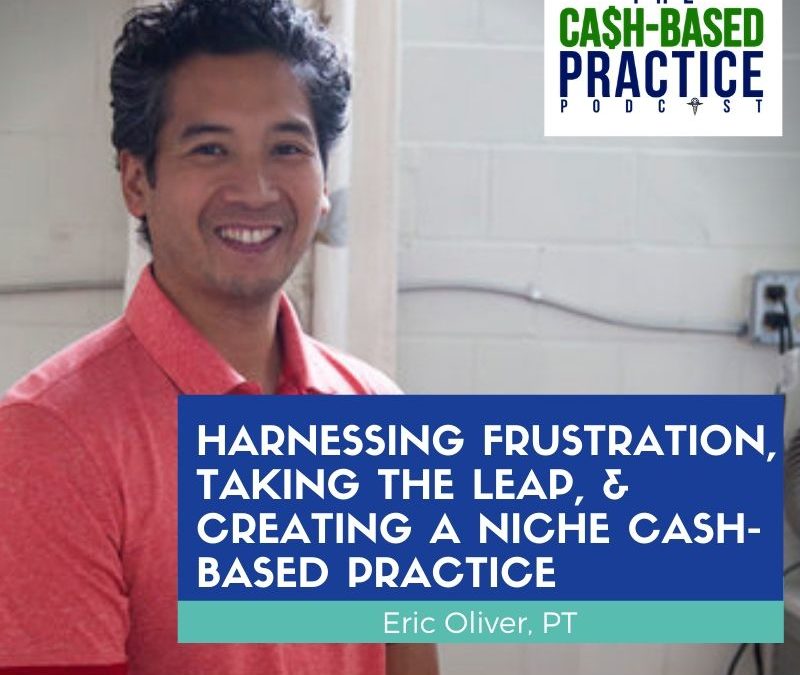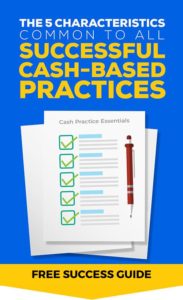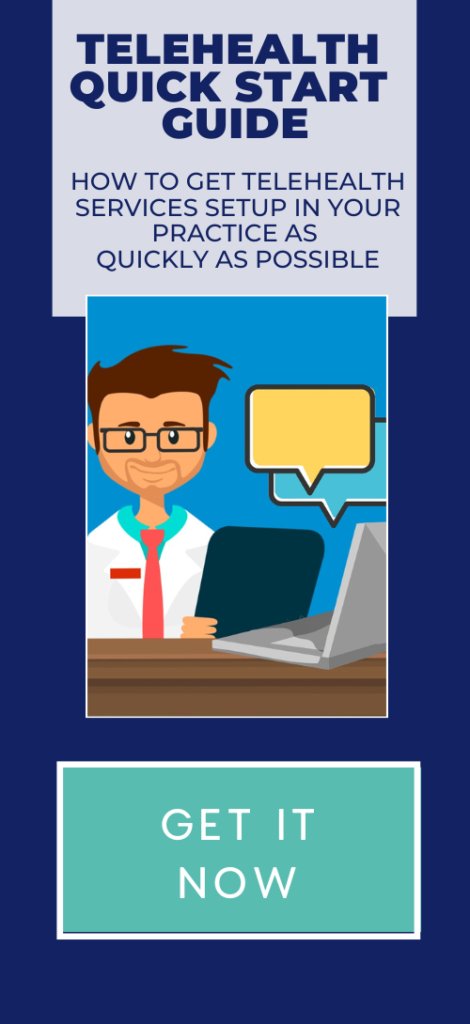Click here to download this episode
 I’m so pumped to present this episode and interview with Eric Oliver, PT of Go Beyond Exercise, a fully cash-based practice in Cincinnati with 2 physical therapists and a sports nutritionist. Eric was one of the first visitors to this website and my Cash-Based Practice Guidebook 3 ½ years ago (which I didn’t know prior to the interview) so it was especially exciting to hear about all he’s done in the years since.
I’m so pumped to present this episode and interview with Eric Oliver, PT of Go Beyond Exercise, a fully cash-based practice in Cincinnati with 2 physical therapists and a sports nutritionist. Eric was one of the first visitors to this website and my Cash-Based Practice Guidebook 3 ½ years ago (which I didn’t know prior to the interview) so it was especially exciting to hear about all he’s done in the years since.
Aside from PT treatment services, he and his staff offer numerous cash-pay fitness and performance services in the endurance athlete niche, and we get into all the details of how he’s had success in this business model.
More specifically, we discuss these cash-based practice topics:
- How he minimized risk as he started his practice
- All the things he did to develop a lucrative presence in the endurance athlete niche
- The logistics of free presentations he gave to generate patients and referral sources
- How he uses testimonials outside of his website to generate new patients and brand awareness
- How to use social media in a way that actually reaches more people’s news feeds
- How he uses high tech equipment like an income-producing employee
- The mistake he made with how he created the pay structure for his first employee, and what he found works best in terms of employee compensation
- The variety of performance, fitness, and educational services he offers
- Some key advice he has for those considering the cash-based business model
Resources and Links mentioned in this episode:
Interested in the cash-based private practice model?
Click Here to learn how to start your own Cash-Based Practice
.
Let us know if you enjoyed the show:
[Click to Tweet] Thank you @BeyondExercise for being an awesome guest on the Cash-Based Practice Podcast w/ @DrJarodCarter







What is the best way to compensate an employee in a cash based practice? Does it make sense to compensate at a different rate for patients the employee brings in?
I’ll let Eric weigh in on this as well, but will speak based on my research of other practices as I look to hire employees myself in the future… The take-home point is that there are a lot of ways slice this one. Some go with straight employee salary. Some have a base salary with a commission that allows to make more money if they are bringing in more patients. Some are on straight commission – a pay-per-patient approach.
One thing you need to consider if you are looking at charging different rates for different staff, OR different patients depending on how those patients get to your clinic: legally and financially it is generally best practice to have one set fee schedule for your practice, and you can make discounts from that schedule based on established practice rules … All of which are clearly delineated in writing, and strictly adhered to. Charging different rates to different people can be an issue when patients start sending in self-claims to third-party payers. Your state may in fact have laws against that.
Amy,
Like Jarod said, there are several ways to do this. I don’t know which is the best way to do it, but the structure that is working for me–as far as keeping it simple and paying her based on the service she is performing–is by paying her a set percentage cut from each patient visit, no matter the type of visit. This forces her to want to be productive, because when she isn’t treating she’s not making anything. I considered paying a base salary, but that would mean I would have to pay someone even on down time which is an overhead cost I can’t afford. By keeping it a set percentage, she has incentive to bring in patients. What is her reward for working to bring in new patients, you may ask?
To answer that, let me tell you that all my rates are set for specific services performed, and anyone that comes through my door pays the same amount as set on my fee schedule. My evaluations cost $164, a one hour follow-up costs $87, and a 30-min follow-up costs $57. (These rates are lower than many other private pay clinics, but it is supported by the community I’m in.) So back to my answer, if I pay my PT 50% of what she brings in, a new client evaluation will pay her $82 for that hour. The 60-minute follow-up will pay her $43.50. So by making my rates variable for different services, I am able to pay my employee the value of their time for what they are doing, therefore incentivizing their work to bring in new clients. I also plan on incentivizing future employees further by paying a quarterly bonus that is based on patient visits. What I have come up with as a good number is 300 visits a quarter gets a PT a bonus of $1250. This means he/she can make an extra $5000 bonus if they stay productive. And of course, anyone who performs above and beyond will get an additional end-of-year bonus.
This percentage split is simple for me to manage, and it is simplified further because my scheduling software (MindBody) allows me to set the % pay rate for each service per given employee. This means that once a new eval checks out, the software automatically keeps track of the payout that the employee gets. So every pay period I just print out the sales report and it automatically generates the % split I will have to enter into Paycor. Easy breezy.
I hope this clears some mud for you!
Eric
Great answer and info, Eric. Thank you!
Jarod,
I want to tell you that I really appreciate your podcast. It has provided me with much motivation and some very good information as I look to start my own cash-based PT practice. Your program has many good success stories about how others have started and improved on theirs. However, I have some hesitations, and I am wondering if you have had contact with PTs for whom this model has NOT worked, and what they/you have learned from them. I am trying to be as well prepared as I can for the “jump”.
Thank you,
Brian
Thanks Brian. I’m so glad to hear you’re enjoying the podcast and getting a lot out of it.
I do know of one practice owner that transitioned out-of-network, and then went back in-network when things didn’t work out, but so far I haven’t been able to get him on the show.
I’m sure there are others out there who have not had the most success in this model, but they’re probably not the ones wanting to yell their story from the mountaintop 🙂
I’ll keep trying
Brian,
Likewise, I do not know of anyone who has failed to make this model work in my area, but there aren’t a lot of therapists trying it either. A couple pieces of advice I will offer you that will help to limit your risk of failing:
Keep you overhead small. Don’t go out and sign an expensive lease on a shiny new place with new equipment before you can prove your business model. I didn’t elaborate much on how I started my practice in the interview, but I started out renting time within a personal training studio. I was fortunate to only have to pay per hour of use. I had an old laptop, purchased a printer, and used a portable massage table. That’s it. In the meantime, I worked four other part-time jobs to keep a steady income, and this was my life for about a year.
Additionally, make sure to put a business plan together! I made the mistake of semi-winging it for a few months and operating a lot on faith. Although it got me through I would have been less stressed if I had a better plan to execute off of. I likely would have been profitable sooner as well.
Lastly, this past Winter I was fortunate to be able to attend a talk by Mark Burnett, creator of the tv shows Shark Tank, Survivor, The Voice, etc. He said one of the best characteristics of being an owner of a start-up is being naive, because if you knew exactly how difficult it is to start, run, and sustain a business you’d likely decide not to take the plunge. As for me, I was definitely naive and didn’t quite realize the work necessary to make this succeed. I’m also inherently a risk-taker, so even if I did know I probably would have started anyway. You sound like you’ve been researching a lot, and it appears you realize how difficult starting this kind of practice can be. So if you are still gung ho about the prospect of owning a private pay practice–despite reading about the significant difficulties of starting one–then I’d say you’re ready to at least TEST the business model. Just be smart and methodical about it, and do what all successful entrepreneurs do–act, fail, learn, adapt, change, repeat.
Good luck!
Eric